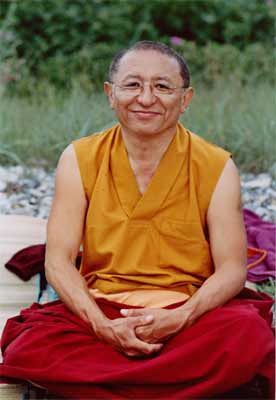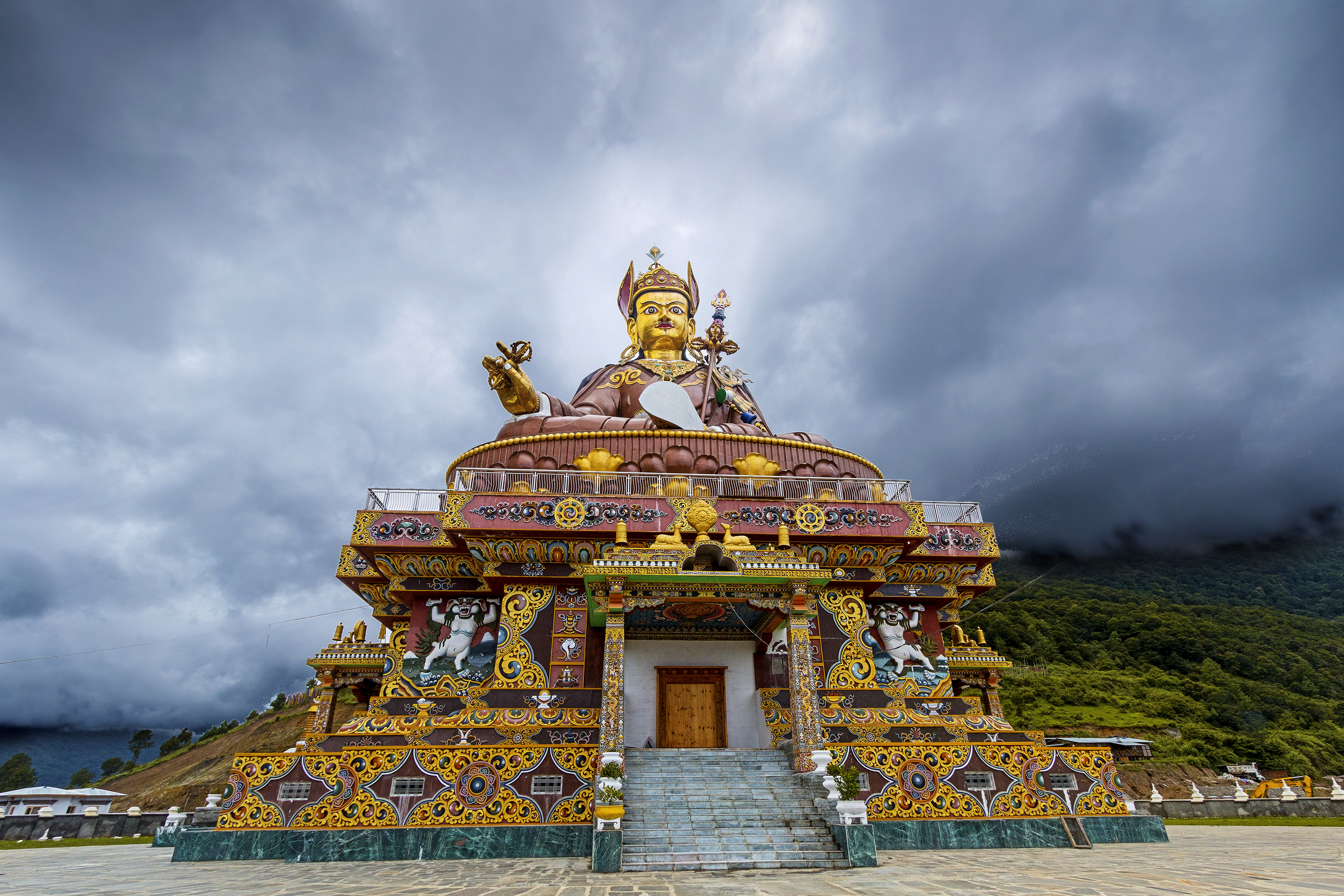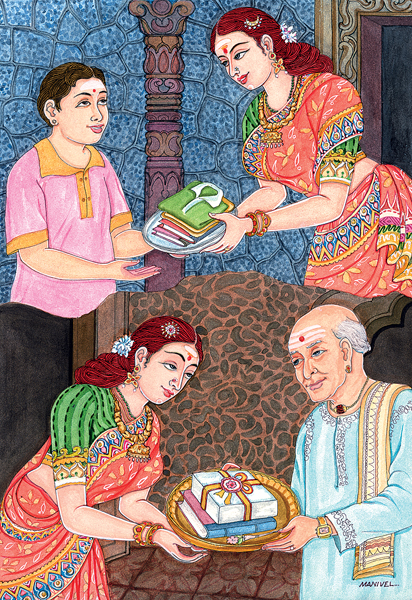|
Chökyi Nyima Rinpoche
Chökyi Nyima Rinpoche (Tibetan: ཆོས་ཀྱི་ཉི་མ་རིན་པོ་ཆེ་, Wyl. chos kyi nyi ma rin po che or ne, छोकी निमा रिम्पोचे) (b. 1951) is a Tibetan Buddhist teacher and meditation master. He is the abbot of Ka-Nying Shedrub Ling Monastery in Kathmandu, Nepal. He is the author of several books, founder of meditation centers around the world, and an international teacher. Life Born in 1951 in Nakchukha, Chökyi Nyima Rinpoche is the eldest son of Kunsang Dechen, a devoted Buddhist practitioner, and Tulku Urgyen Rinpoche, who was considered one of the greatest Dzogchen masters of our time. When he was 18 months old, Chökyi Nyima was recognized as the seventh incarnation Tibetan meditation master Gar Drubchen from Drikung Kagyu lineage. Not long after being recognized as tulku, he was enthroned at Drong Gon Tubten Dargye Ling, in Nakchukha, north of the capital city Lhasa. Chökyi Nyima and his family fled Tibet ... [...More Info...] [...Related Items...] OR: [Wikipedia] [Google] [Baidu] |
Erik Pema Kunsang
Erik Pema Kunsang (born Erik Hein Schmidt) is a Danish translator and was, along with Marcia Binder Schmidt, director of Rangjung Yeshe Translations and Publications in Kathmandu. He has translated over fifty volumes of Tibetan texts and oral teachings. His other projects include the Rangjung Yeshe Wiki, an ongoing electronic publication that is compiling an extensive glossary of Buddhist terminology to bridge the Tibetan and English languages. Erik has been the assistant and translator for Tulku Urgyen Rinpoche and his sons since the late 1970s. He was active in facilitating masters of the Practice Lineages to teach in the West. He lives in Denmark. References Interview on Lotsawa School External links * Publications websiteShedrub Development MandalaGomde DenmarkGomde USA ''This article uses GFDL-licensed material from the Rangjung Yeshe Wiki The Rangjung Yeshe Wiki is a Wiki community established in 2005 focused on building a Tibetan-English Dictionary, glossarie ... [...More Info...] [...Related Items...] OR: [Wikipedia] [Google] [Baidu] |
Nyingma Tulkus
Nyingma (literally 'old school') is the oldest of the four major schools of Tibetan Buddhism. It is also often referred to as ''Ngangyur'' (, ), "order of the ancient translations". The Nyingma school is founded on the first lineages and translations of Buddhist scriptures from Sanskrit into Tibetan in the eighth century, during the reign of King Trisong Detsen (r. 710–755). Nyingma traditional histories consider their teachings to trace back to the first Buddha Samantabhadra (Güntu Sangpo) and Indian mahasiddhas such as Garab Dorjé, Śrī Siṃha and Jñānasūtra. Traditional sources trace the origin of the Nyingma order in Tibet to figures associated with the initial introduction of Buddhism in the 8th century, such as Padmasambhava, Yeshe Tsogyal, Vimalamitra, Vairotsana, Buddhaguhya and Shantaraksita. The Nyingma tradition is also seen having been founded at Samyé, the first monastery in Tibet. Nyingma teachings are also known for having been passed down throu ... [...More Info...] [...Related Items...] OR: [Wikipedia] [Google] [Baidu] |
Nyingma Lamas
Nyingma (literally 'old school') is the oldest of the four major schools of Tibetan Buddhism. It is also often referred to as ''Ngangyur'' (, ), "order of the ancient translations". The Nyingma school is founded on the first lineages and translations of Buddhist scriptures from Sanskrit into Tibetan in the eighth century, during the reign of King Trisong Detsen (r. 710–755). Nyingma traditional histories consider their teachings to trace back to the first Buddha Samantabhadra (Güntu Sangpo) and Indian mahasiddhas such as Garab Dorjé, Śrī Siṃha and Jñānasūtra. Traditional sources trace the origin of the Nyingma order in Tibet to figures associated with the initial introduction of Buddhism in the 8th century, such as Padmasambhava, Yeshe Tsogyal, Vimalamitra, Vairotsana, Buddhaguhya and Shantaraksita. The Nyingma tradition is also seen having been founded at Samyé, the first monastery in Tibet. Nyingma teachings are also known for having been passed down throug ... [...More Info...] [...Related Items...] OR: [Wikipedia] [Google] [Baidu] |
Lamas From Tibet
Lamas may refer to: * the plural form of Lama, a title for a teacher of the Dharma in Tibetan Buddhism. Places * Lamas Province, Peru ** Lamas District ** Lamas, Peru, the capital of Lamas Province and seat of Lamas District * Lamas (Braga), a parish in Braga District, Portugal * Lamas (Cadaval), a parish in Cadaval Municipality, Lisbon District, Portugal * Lamas (Miranda do Corvo), a parish in Miranda do Corvo Municipality, Coimbra District, Portugal * Lamas (Macedo de Cavaleiros), a parish in Macedo de Cavaleiros Municipality, Bragança District, Portugal * Santa Maria de Lamas, a parish in Aveiro District, Portugal * Lamas, Norfolk, a village in England Other uses * Lamas (surname) * Lamas Quechua, a variety of Quechuan language *London and Middlesex Archaeological Society (LAMAS) See also * Lama (other) *Lammas *Llama (other) A llama is a South American animal. Llama may also refer to: * LLaMA, a large language model from Meta AI * Large Latin Amer ... [...More Info...] [...Related Items...] OR: [Wikipedia] [Google] [Baidu] |
Karma Kagyu Tulkus
Karma (; sa, कर्म}, ; pi, kamma, italic=yes) in Sanskrit means an action, work, or deed, and its effect or consequences. In Indian religions, the term more specifically refers to a principle of cause and effect, often descriptively called the principle of karma, wherein intent and actions of an individual (cause) influence the future of that individual (effect): Good intent and good deeds contribute to good karma and happier rebirths, while bad intent and bad deeds contribute to bad karma and bad rebirths. As per some scripture, there is no link of rebirths with karma. The concept of karma is closely associated with the idea of rebirth in many schools of Indian religions (particularly Hinduism, Buddhism, Jainism and Sikhism), as well as Taoism.Eva Wong, Taoism, Shambhala Publications, , pp. 193 In these schools, karma in the present affects one's future in the current life, as well as the nature and quality of future lives—one's ''saṃsāra''. This concept has ... [...More Info...] [...Related Items...] OR: [Wikipedia] [Google] [Baidu] |
Karma Kagyu Lamas
Karma (; sa, कर्म}, ; pi, kamma, italic=yes) in Sanskrit means an action, work, or deed, and its effect or consequences. In Indian religions, the term more specifically refers to a principle of cause and effect, often descriptively called the principle of karma, wherein intent and actions of an individual (cause) influence the future of that individual (effect): Good intent and good deeds contribute to good karma and happier rebirths, while bad intent and bad deeds contribute to bad karma and bad rebirths. As per some scripture, there is no link of rebirths with karma. The concept of karma is closely associated with the idea of rebirth in many schools of Indian religions (particularly Hinduism, Buddhism, Jainism and Sikhism), as well as Taoism.Eva Wong, Taoism, Shambhala Publications, , pp. 193 In these schools, karma in the present affects one's future in the current life, as well as the nature and quality of future lives—one's ''saṃsāra''. This concept has a ... [...More Info...] [...Related Items...] OR: [Wikipedia] [Google] [Baidu] |
Dzogchen Lamas
Dzogchen (, "Great Perfection" or "Great Completion"), also known as ''atiyoga'' ( utmost yoga), is a tradition of teachings in Indo-Tibetan Buddhism and Yungdrung Bon aimed at discovering and continuing in the ultimate ground of existence. The primordial ground (''gzhi'', "basis") is said to have the qualities of purity (i.e. emptiness), spontaneity (''lhun grub'', associated with luminous clarity) and compassion (''thugs rje''). The goal of Dzogchen is knowledge of this basis, this knowledge is called ''rigpa'' (Skt. ''vidyā''). There are numerous spiritual practices taught in the various Dzogchen systems for awakening rigpa. History Dzogchen developed in the Tibetan Empire period and the Era of Fragmentation (9th-11th centuries) and continues to be practiced today both in Tibet and around the world. It is a central teaching of the Yundrung Bon tradition as well as in the Nyingma school of Tibetan Buddhism. In these traditions, Dzogchen is the highest and most de ... [...More Info...] [...Related Items...] OR: [Wikipedia] [Google] [Baidu] |
Buddhist Monks From Tibet
Buddhism ( , ), also known as Buddha Dharma and Dharmavinaya (), is an Indian religion or philosophical tradition based on teachings attributed to the Buddha. It originated in northern India as a -movement in the 5th century BCE, and gradually spread throughout much of Asia via the Silk Road. It is the world's fourth-largest religion, with over 520 million followers (Buddhists) who comprise seven percent of the global population. The Buddha taught the Middle Way, a path of spiritual development that avoids both extreme asceticism and hedonism. It aims at liberation from clinging and craving to things which are impermanent (), incapable of satisfying ('), and without a lasting essence (), ending the cycle of death and rebirth (). A summary of this path is expressed in the Noble Eightfold Path, a training of the mind with observance of Buddhist ethics and meditation. Other widely observed practices include: monasticism; " taking refuge" in the Buddha, the , and the ; and ... [...More Info...] [...Related Items...] OR: [Wikipedia] [Google] [Baidu] |




